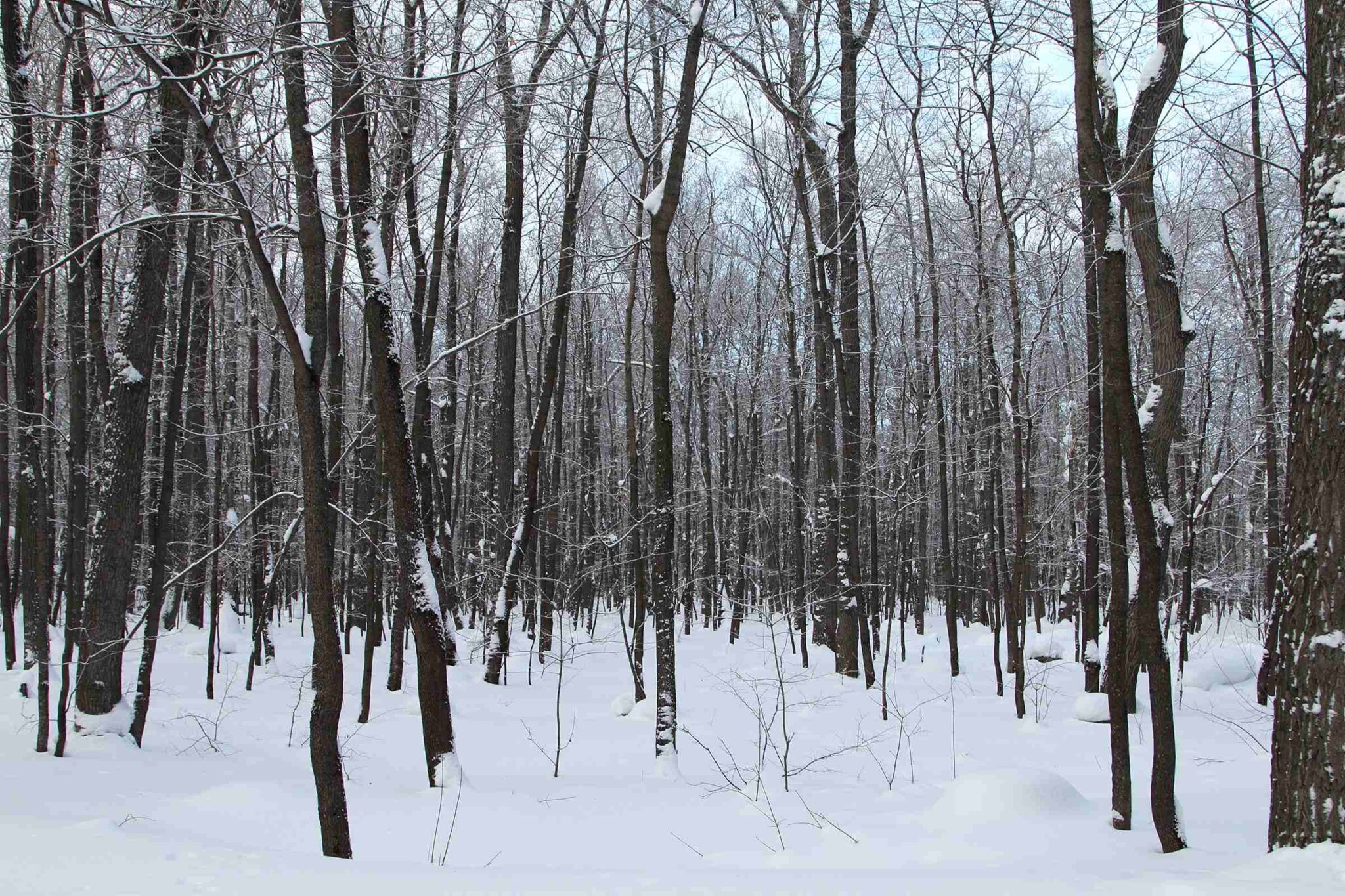
When winter starts to roll around, we have a million different things to think about doing. We have indoor checklists, outdoor checklists, car maintenance, and more. Something you often forget to think about is preserving your trees throughout the winter.
The trees on your property stand tall all spring, summer, and fall, so make sure you give them some love this winter by doing everything you can to keep them strong and healthy.
What Causes Winter Damage?
There are a bunch of problems that can occur relating to your trees in winter. Here are some of the most significant ones:
- Lack of plant hardiness (Minnesota is in one of the USDA’s most difficult hardiness zones)
- Extreme winter storms
- Prolonged sub-zero temperatures
- Lack of snow (snow acts as an insulator for smaller plants closer to the ground)
- Environmental stress
Injuries to Roots
Stems and branches are first to become dormant when leaves fall off, and they prepare themselves for the long winter ahead.
While this is happening, the roots are still trying to suck water from the soil and continue their preparation for winter. As a result, trees and shrubs will die if soil temperatures fall below 10 degrees. Luckily, this doesn’t often happen because soil temperatures are usually much warmer than the air. It’s still vital that you’re protecting shrubs in winter as well as trees.
Here are a few ways to help reduce the likelihood of a root injury:
- Cover roots of new trees with mulch for insulation
- Water heavily before the ground freezes because the trees will need that water to carry them through the winter
- Check for cracks in the soil and fill them in
Protecting Deciduous Trees
There are two primary problems that you can run into with deciduous trees during the winter:
- Sunscald
- Dieback
Let’s take a look at both of these more in-depth to see if we can help you prevent both of these problems from occurring.
Sunscald
Sunscald is when there are dried and cracked airs of bark on the southern portion of a tree. When the cold weather hits and the sun heats the bark up, it stimulates activity. Once the sun goes away or gets covered by a cloud or building, it can kill the tissue that is actively working in the tree.
It’s critical to know how to protect newly planted trees from frost because these types of trees are most susceptible to sunscald. Older trees can also get it because they have thicker bark that keeps the tree tissue dormant longer. Trees with lower and thinner branches can also get sunscald because the sun has a direct access point to the trunk.
Prevent sunscald by wrapping the trunk with white guards to reflect the sun. Use bright colors that reflect the sun and make sure always to cover new trees in the fall and remove it in the spring after the final frost.
Dieback
This problem occurs when the buds on trees and shrubs die during the winter. It’s important to understand that this usually happens when trees and shrubs bud too early. The result is no flowers or fruit from that tree.
Don’t fertilize your grass or gardens too early, and that can help prevent dieback, but there isn’t much else that you can do. It helps to put plants in slightly sheltered locations. Also, do not prune your plants and trees in the fall because that will increase the chances of them taking too much cold air in during the winter.
Protecting Evergreens
Now let’s talk about those trees that stay green all year. The evergreens require winter attention as well, so don’t start ignoring them.
Here are some of the reasons why evergreens turn brown or die during the winter:
The sun and wind cause water loss when the roots are frozen and can’t retrieve water. When the wind blows on your evergreens, it requires them to expel more water and oxygen, which means they need more water to make this process a reality.
If the ground is frozen, so is the water. When evergreens can’t get the water they need during the winter, they turn brown.
Since evergreen trees keep their buds all year, it means they need more water than deciduous trees do during the winter.
Another reason evergreens die is similar to their leaf losing counterparts. When there are sunny days, it warms the tissue of the tree. When the tissue is warm, it stimulates activity, and if it quickly turns from warm to cold, it can cause damage to the bark and, ultimately, the tissue.
To protect your evergreens, you want first to limit the amount of trimming or pruning you do with them. Evergreens are dense and for a good reason. They need protection from the cold winter wind, or else they’ll have a hard time staying alive.
Be careful about where and when you plant them. If the tree’s roots are too short when the ground freezes, they won’t have enough depth to reach the groundwater. In Minnesota, we can experience freezing as deep as three or four inches beneath the surface, and this makes it difficult for young trees to drink.

Preventing Snow, Ice, and Salt Damage
Another essential part of preserving your trees throughout the winter is helping to protect them from snow and ice damage. Heavy snow and ice storms will break branches, knock over trees, and cause permanent issues.
Here are some ways to prevent your trees from getting damaged during rough winter storms:
- Use tree covers for winter especially on small trees
- Prune trees properly to avoid weak branches
- Consider cabling branches together to prevent snow buildup and breakage
While Minnesota is reducing the use of salt on roads and sidewalks, it still harms our environment. Salt causes winter injury and dieback of trees and shrubs from road runoff. Here are a few ways to help prevent salt from damaging your trees and plants.
- Do not plant trees too close to roads or where salt spray
- Avoid using de-icing materials on sidewalks and driveways near trees and shrubs
- Clean the snow off your walkways as soon as possible to prevent freezing
- Use other de-icing salts like magnesium and calcium chloride
- Look into salt-tolerant plants and trees if you must root them near roads and driveways
- Provide proper irrigation and flush salt out from around the trees regularly
How to Prevent Animal Damage During Winter
Animals such as mice, rabbits, and deer will cause damage to your trees because they can chew through the bark. The best strategy for preventing animal damage in the winter is with physical barriers to prevent them from gaining access to your trees and plants.
Remove all brush piles, leaves, and anything lying around your property to limit nesting areas. Animals will be searching for a place to call their own during the winter, so don’t let that be close to your trees and shrubs.
How to Protect Newly Planted Trees
If you want to know how to protect newly planted trees from frost, the answer is wrapping them. Wrapping small trees is important because it helps keep the wind and heavy snow off of them.
The old school method of wrapping them with a burlap sack works well, and some people prefer to use a windscreen to prevent the trees from snow and ice storms.
When you don’t wrap newly planted trees, they can get hit with too much wind. When the wind hits the trunk of the tree, it requires it to need more water to survive. Smaller trees don’t have deep roots, so if the ground is frozen, the tree will not be able to get the water it needs to survive.
Wrapping trees for winter helps prevent heavy and wet snow from weighing it down. Branches can crack, snap, and break if the snow starts to build up on their branches. This factor is especially true in evergreens that retain their leaves during the winter.
While you want to think about the tree trunk and branches, you also want to keep the roots in mind when protecting your young trees. Snow works as an insulator, so it helps to keep the snow-packed around the roots of the tree to keep the ground from freezing. The warmer the soil, the better the chance your tree has of surviving.
Even better than snow is mulch and fertilizer. Use these around the trunk of the tree, but don’t let it touch the trunk itself. The mulch works as an excellent insulator and helps keep the soil warm so the tree can get nutrients all winter long.
Final Thoughts
By now, you should understand how to protect your trees during the winter. Our trees provide us with shade, oxygen, and plenty of beautiful sights during the year. Make sure you do everything you can to keep them healthy and strong even when the weather takes a turn for the worst.
